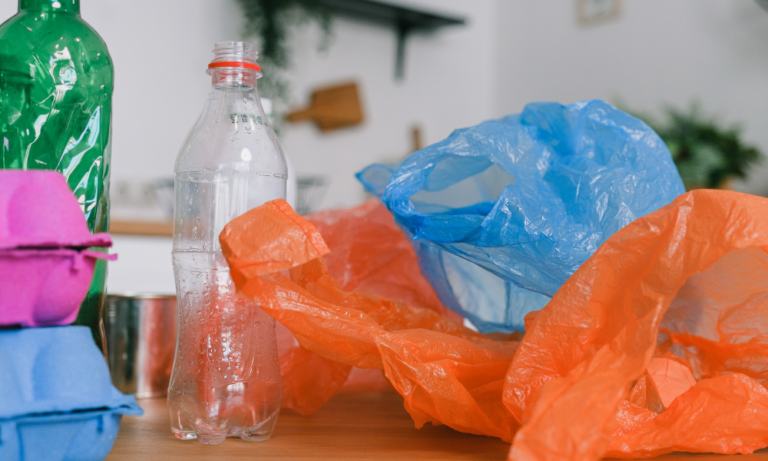The world is facing an ever-growing plastic waste problem. The fact that it is lightweight, convenient, and inexpensive has made plastic an everyday convenience. It also serves as the material for packaging most products we use, such as food, clothing, and other household items. However, the impact of this plastic consumption is getting harder to ignore, as the effects of climate change become more visible and studies into the damage microplastics are doing to our bodies come to light.
According to the UN, every year, 8 million tonnes of plastic end up in the world’s oceans, the equivalent of a garbage truck’s worth of plastic dumped into the ocean each minute. Even leaving aside the disposal of plastic, the production and incineration of plastic was estimated to have added 850 million metric tonnes of greenhouse gases into the atmosphere in 2019 alone, according to the World Economic Forum.
Initiatives such as the Australian Government’s restriction on single-use plastic bags have had some positive effects, helping to change consumer attitudes and causing businesses to think about developing alternatives to traditional plastic, including degradable, biodegradable, and compostable bags and packaging.
Degradable Plastics
Degradable plastics refer to a type of plastic that can break down into smaller pieces under certain environmental conditions. This process occurs through chemical reactions that break the polymer chains, which makes the plastic brittle and more likely to fragment into smaller pieces.
However, degradable plastics are not considered a sustainable alternative to traditional plastics because they do not completely decompose and can still persist in the environment for hundreds of years, posing a risk to wildlife and ecosystems. Moreover, degradable plastics can only break down in specific conditions, such as high temperatures, sunlight, and moisture, which are not always present in the environment.
Biodegradable and Compostable Plastics
Due to a mixture of grassroots and governmental pressure, businesses have started to implement a range of biodegradable and compostable alternatives to the plastics that we encounter in our daily lives. In a way, this shows progress, with the steady rise in the production of these plastics modelled to continue over the next few years. However, the way these products are created and disposed of introduces a lot of complexities, and we should not overestimate their effectiveness when it comes to sustainable consumption.
What does biodegradable and compostable plastic mean?
Biodegradable and compostable plastics can be made from similar materials, such as plant-based polymers, cornstarch, or sugarcane, and are designed to be broken down by microorganisms such as bacteria and fungi into natural substances, including carbon dioxide, water, and biomass.
According to the World Wide Fund for Nature (WWF) website, the difference between the two comes down to how they are broken down once used.
Biodegradable plastic is defined by its ability to break down completely into substances found in nature, and in a reasonable time frame…while compostable plastic also biodegrades, it is specifically designed and tested to be processed in either home or industrial composting facilities. Compositing facilities enable specific conditions like temperature and moisture to turn the plastic into usable soil conditioner.
What are the issues with biodegradable and compostable plastics?
As hinted at above, biodegradable and compostable plastic can help reduce the amount of waste we produce, but only when broken down in the right conditions. Without using special facilities, these plastics may only partially break down, leaving us with microplastics, an equally damaging environmental hazard. In other words, if a biodegradable bag is simply discarded in a red bin, it won’t properly decompose.
In addition, further complexity is found when we consider that there are no clear standards as to what biodegradable actually means. Not all plastics are created equal, and it can be difficult for individuals to understand how to best dispose of an item.
Cutting Out Plastic
While we can’t cut out plastic right away, we can certainly work towards phasing it out. By working with our manufacturers, COS is doing just that, joining other forward-thinking businesses that wish to reduce and/or replace plastic where possible. A couple of examples include:
- The box for COS Premium paper has been redesigned so that a plastic strap is no longer required. A small change has saved millions of pieces of plastic strapping from ending up in landfill.
- Honeycomb paper wrap is being used with the delivery of some products, doing away with bubble wrap and plastic protective coverings inside the box.
As we have seen, innovations are being made when it comes to plastic production and treatment, but more work needs to be done. Consumers can’t be expected to know all the ins and outs of recycling, meaning the government and corporations have their part to play.
To see more about COS’ commitment to sustainability and to browse our eco-friendly product range, check out our eCatalogue.

